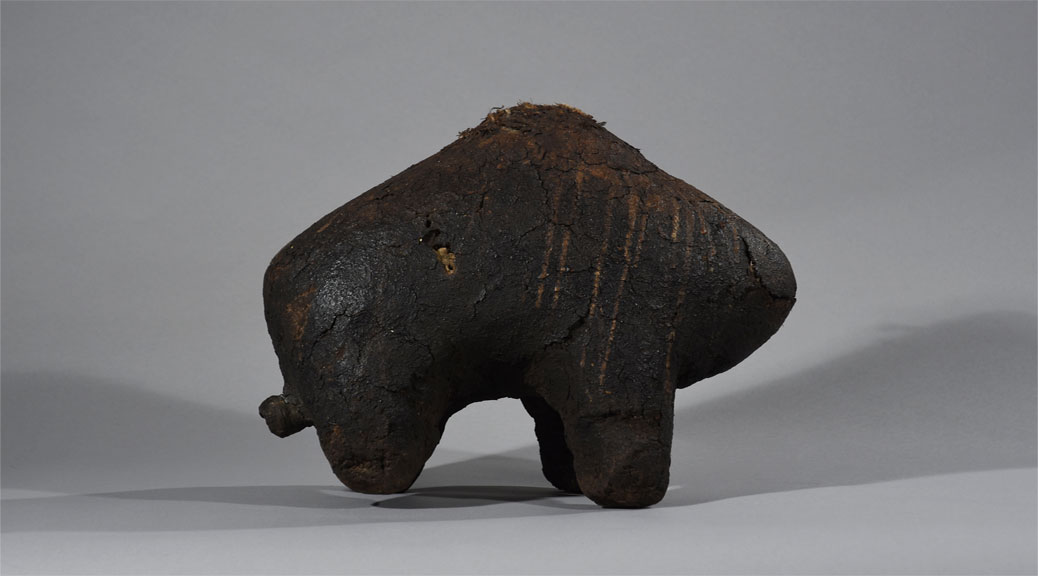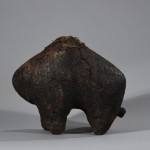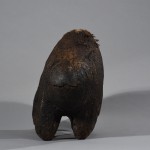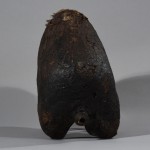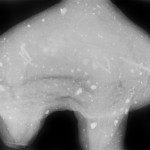HCK 1116-2
Boli Figure, Bamana tribe, Mali
Medium: Clay, metal nails and organic materials
H: 30 cm (11,8″), L: 35 cm (13,8″), W: 17 cm (6,7″), weight: 3,55 kg.
This fine and exceptionally well-preserved zoomorphic four-legged ritual object, called a Boli (pl. boliw), once played a central role in the ritual life of a Bamana village. Such power objects were owned by male initiation associations whose members progress through induction processes that span decades. Over time, they attain esoteric knowledge that leads to a greater understanding of the natural and spiritual worlds. Opaque and mysterious to the uninitiated eye, boliw are safely handled only by those association members equipped with the most rarified skills and expertise.
The primary function of a Boli is to accumulate and control the naturally occurring life force called nyama for the spiritual benefit of the community. Used as altars or carried during dance performances, they are complex creations created from esoteric recipes, or daliluw. Animal bones, vegetable matter, honey, and metal are packed around an interior armature of bamboo wrapped in white cotton cloth. They are covered with layers of mud and clay, and their surfaces accumulate sacrificial materials over time, including chicken and goat blood, chewed kola nuts, alcohol, and millet porridge. Each added layer of material lends the structure greater spiritual power.
Boliw and their numerous ingredients have been interpreted in a number of different ways. It has been suggested, that the disparate elements of which Boliw are composed symbolize the various parts of the universe, so that the whole can be read as a model of Bamana cosmological belief. It has also been noted that the Boliw’s sacrificial coatings are strikingly similar to the undigested contents of a human stomach, while the interiors of the Boliw are made of materials generally associated with the body’s exterior. For this reason, they have been interpreted as portrayals of animals and people turned inside out. While this example takes a vaguely bovine form, others are more representative of recognizable subjects, including human figures. (Source: A History of Art in Africa and Africa and Africa – The Art of a Continent).
The Danish National Museum experts are very cautious in determining time of the effects deposited for examination. With regard to this Boli, the X-ray recording show that it mainly consists of organic materials, and few ‘metal objects.’ The organic materials appear in many layers and are added over a long period of time in association with ritual ceremonies. By contrast, the age of these ‘metal elements’ is more accurate; since the museum’s metal experts can determine that they are ‘metal nails’, which were manufactured in France about 1880th.
Reports said that the French during their visits to Mali used these ‘nails’, as means of payment and often received gold nuggets in return. The French traded with the Bamana people of Mali throughout the 19th century and finally took total control of the country Mali in 1892 and called it ‘French Sudan’.
Age: Est. late 19th to early 20th Century.
Provenance: Private Belgian collection
X-Ray:
Request price for Boli